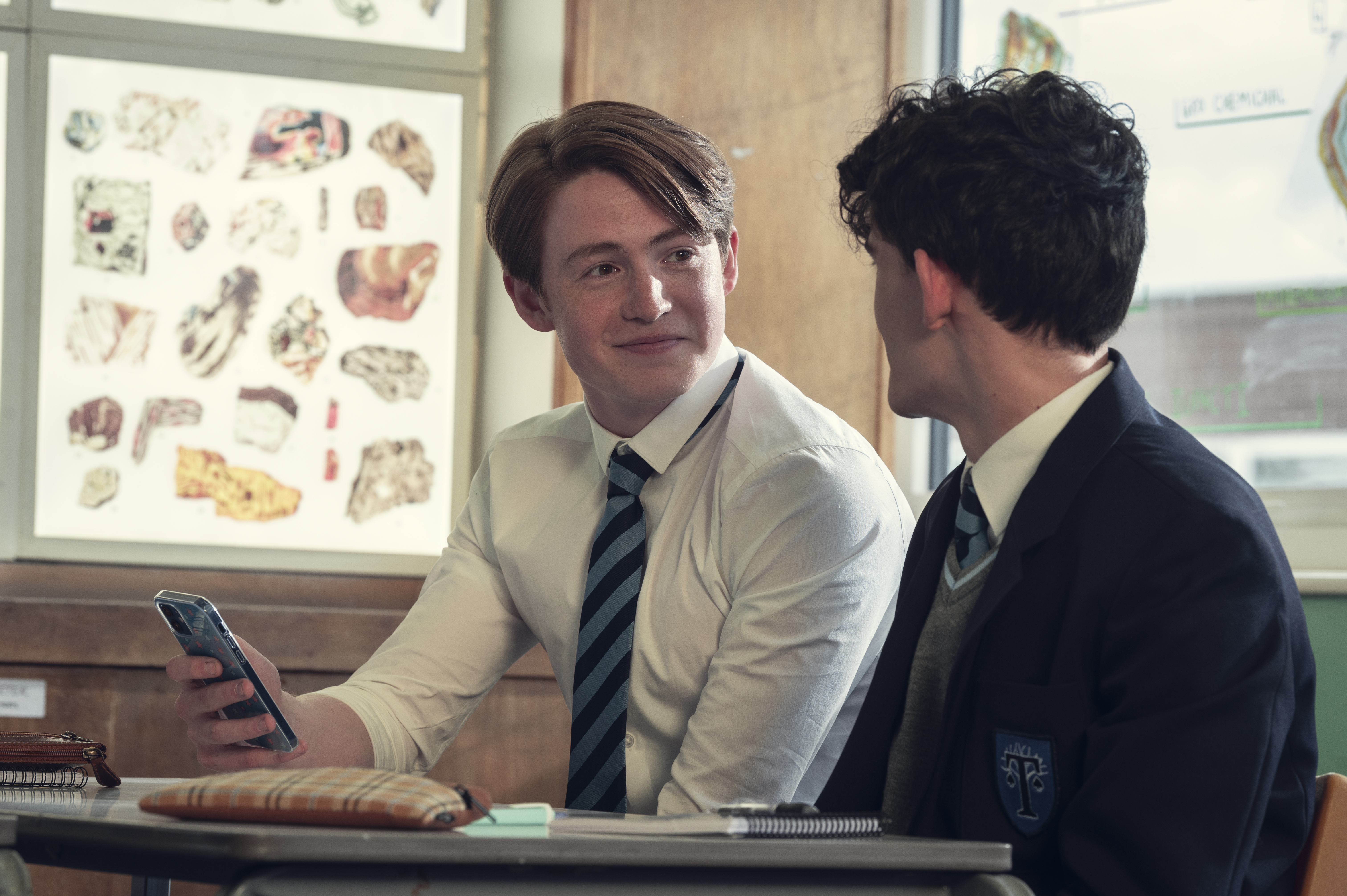By Dr Lindsey Cameron, Kirsty Gravestock [PhD student], Hannah Bassom and Abigail Lugg [undergraduate students], School of Psychology.
We can’t stop thinking about Heartstopper.
Heartstopper has opened a ground-breaking new chapter in LGBTQ+ representation. This beautiful, unapologetic, boy meets boy love story follows two 15- and 16-year-old boys as they become friends, fall in love, and discover who they are. The boys are surrounded by their close circle of friends, each on their own journeys to understand their LGBTQ+ identity. But Heartstopper is much more than a love story – Dr Lindsey Cameron and Kirsty Gravestock research diversity in young people’s media, and can tell you that this new Netflix series, and the books it is based on, is nothing short of radical and just what the world needs right now.
The characters refer to homophobic and transphobic bullying they have experienced in the past, and there are several instances of homophobic victimisation depicted in the series, but the show focuses more on the positive relationships and lives the characters are building for themselves. This fictional, and somewhat rose-tinted view of life for LGBTQ+ young people may bring about complicated feelings for some in the LGBTQ+ community, but Heartstopper provides a joy and hope-filled view of what life could be like for LGBTQ+ young people today.
“Heartstopper is a breath of fresh air – a book and TV series specifically created for young viewers. When myself and my girlfriend were growing up, we were surrounded by dominant heterosexual norms, but perhaps greater exposure and diversity in relation to LGBTQ+ media would have helped me work out my sexuality a lot earlier.” – Abigail Lugg
So here is why you should stop what you’re doing and watch (and read) it now – not just because it’s wonderful, but because decades of psychological research help show why it’s essential viewing for everyone.
1.Representation matters – Heartstopper’s positive role models smash gay stereotypes and provide a much-needed shot of LGBTQ+ diversity, and we need more diversity in young people’s media. We need our young people, including LGBTQ+ young people, to see themselves reflected back in books, TV and film, to feel validated, valued, seen, and accepted. Mainstream shows featuring positive, life-affirming LGBTQ+ story lines send an important message: representation matters, equality matters, LGBTQ+ people matter.
2.We need positive LGBTQ+ storylines for a younger audience –Whilst the show depicts 15- and 16-year-old characters, the storyline, characters and key messages will appeal to both younger and older audiences alike. It’s a show that younger adolescents, as well as older teenagers and their parents can watch together without too much cringe. And that is important: from a young age, parents are a crucial source of information for children as they learn about their social world. By watching Heartstopper with their children, parents will have an opportunity to talk about the LGBTQ+ community and identity (whether their child is part of the community or not), and maybe even inspiring their child to open up about their experiences.
3.Challenging prejudice and stereotypes – Victimisation based on sexual orientation emerges mainly during early adolescence, when homophobic name-calling is common. Decades of research on diversity in books, films and TV tells us that that the simple but immersive act of reading and watching characters that are different to us in some way, and who we connect with, can reduce prejudice and stereotyping, build support for equality, and increase openness to diverse friendships.
4.Being a good ally – Heartstopper models constructive ally behaviours by providing examples of how parents, peers and teachers can support and create comfortable environments for LGBTQ+ young people, as well as demonstrating potential ways of standing up for and supporting victims of LGBTQ+ bullying. Research tells us that viewing, and forming attachments to LGBTQ+ characters, as well as observing or engaging in cross-group friendships with LGBTQ+ peers, fosters empathy and constructive ally behaviours, helpful bystander reactions to homophobic bullying, and support for social change and equality.
“As a Gen-Z-TikTok-addicted-bisexual, it was shocking to see how accurately the plight of discovering one’s own sexuality was portrayed. From Nick’s confusion over suddenly liking a boy, to panic-searching BuzzFeed quizzes to determine his sexuality for him, to more serious topics such as homophobic bullying, Heartstopper truly shows people what it’s like to not be straight. Heartstopper works by showing us it’s okay to love who you love and be who you want to be unapologetically.” – Hannah Bassom
Heartstopper gives us a view of what life could and should be like for young LGBTQ+ people. And this is why Heartstopper is so important, and so radical: we need more unapologetic, joyful, positive stories like this for young people, filled with optimism, love and Pride.
To see all the research references and find out more about the blogpost authors’ areas of study, please view the full blogpost on the Psychology website.

